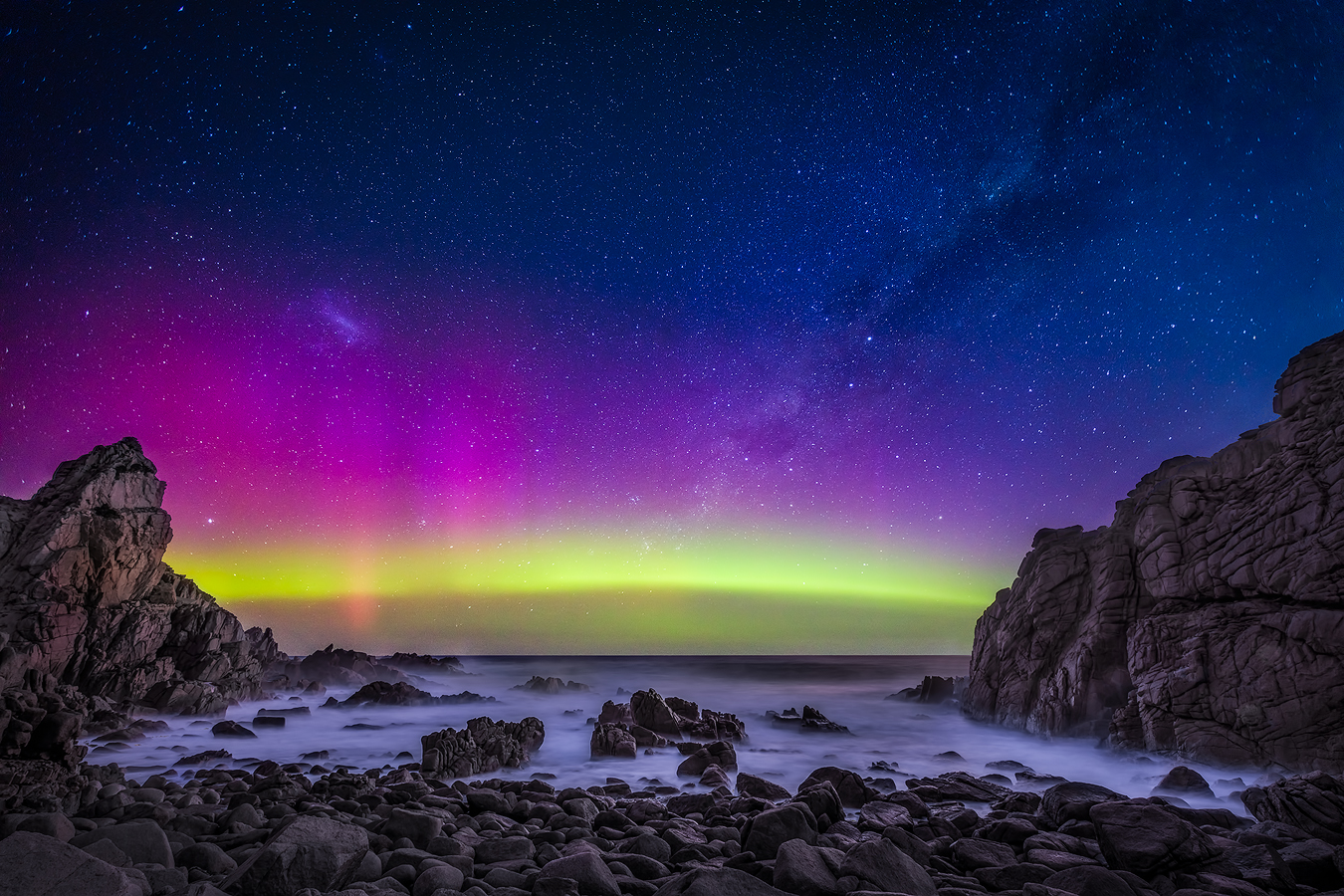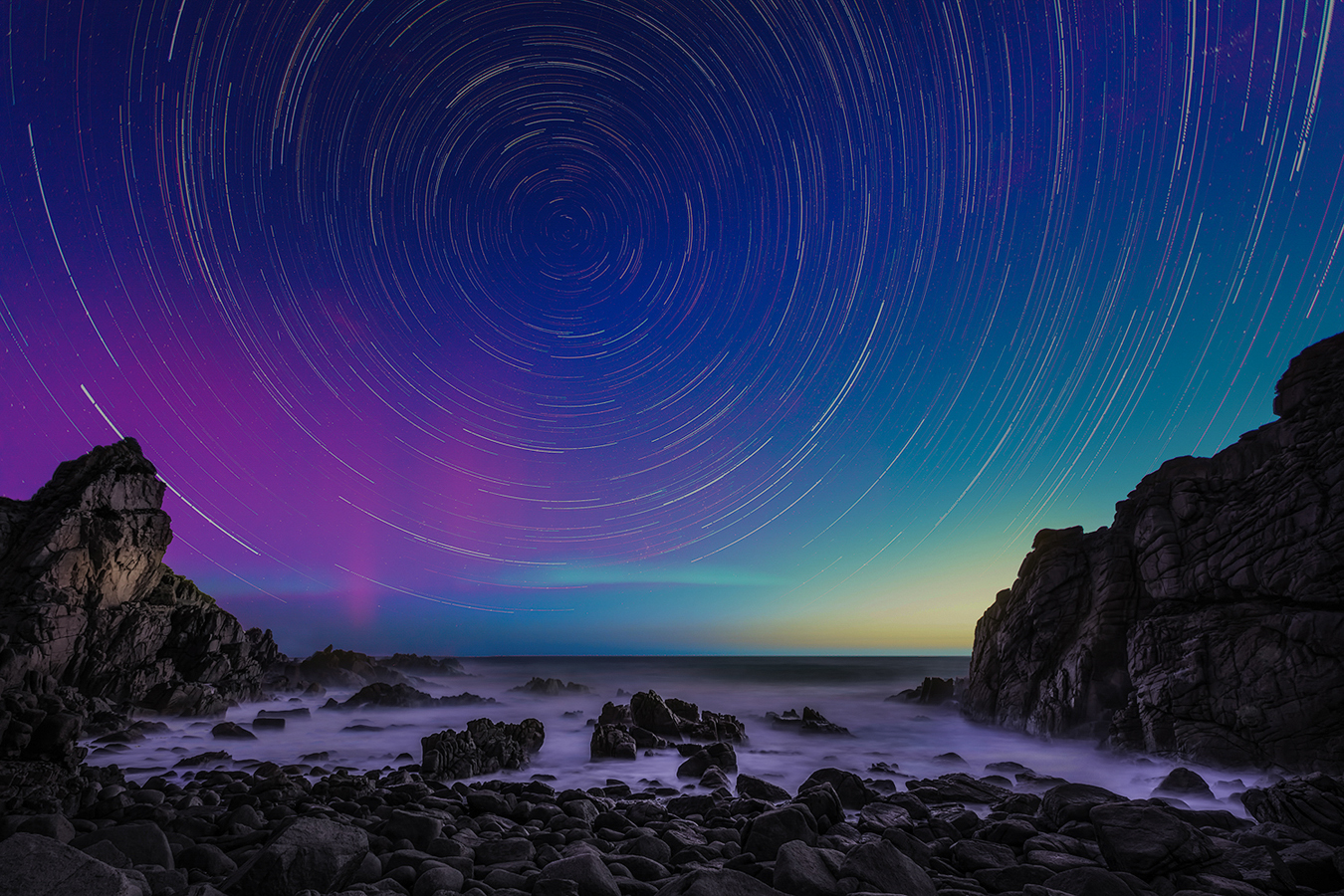We just had a beautiful Aurora Australis hit Victoria.
An aurora is one of nature’s most spectacular visual phenomena—mysterious bright lights dancing across the night sky.
‘Aurora’ was the Roman Goddess of Dawn and ‘Boreas’ is Greek for ‘wind’ making for the Dawn Wind, a wind that can be seen like no other on earth. Thus, the sight of the aurora borealis, or northern lights, is something that bedazzles everyone who gets the opportunity to view it. The auroras in the northern hemisphere are called aurora borealis (or Northern Lights). In the southern hemisphere, they’re called the aurora australis (‘australis’ comes from the Latin word for ‘southern’) or Southern Lights. before we going too far into complex technical terms, the bright dancing lights of the aurora are actually collisions between electrically charged particles from the sun that enter the earth’s atmosphere.
Here are some tips, how to shoot stunning photos of the Northern and Southern Lights around the world:
- Prepare your Camera:
Everyone knows how important settings are on the camera for all types of photography– fast shutter speeds for wildlife on the move, maximum depth of field for a field of wildflowers, and underexposing just a little to get colors to pop. The same is true for aurora photography. In order to capture the best images, be camera ready. - Focus for the night:
Since it is more difficult to find focus in the dark, set up your camera/lens combination and get an autofocus reading on an object at infinity while it is still light outside. Then set your lens to manual focus mode. (Note: Manually setting your lens to the infinity mark (the lazy eight) could result in out of focus images, since very few lenses are set perfectly by their manufactures.) - Shoot in RAW mode
- Mount your camera and tripod correctly
- Composition
- Noise Reduction:
When using noise reduction, it takes almost as long to write to the CF card as the exposure does. If the aurora activity is strong, keep right on shooting and don’t wait for it to write and review as several good shots could be missed, especially since most of the best displays only last for a few minutes. - LCD Display:
Another setting that might seem minor but is important for digital photography is setting the LCD review brightness to low. Lots of people like having it bright so as to see the image easily, but a bright LCD for aurora shooting can be misleading as it can make captured images appear brighter than they actually are. When images are reviewed on the computer later, what you thought were bright images actually are not. - Battery life and cold weather:
Be sure to turn off the photo review function, so that every shot taken does appear. This is a battery drainer and the more that can be done to lengthen the battery life in the cold the better. Be sure to have at least two batteries when shooting in very cold temperatures as the cold will drain a battery much faster than normal use. Change the battery, put the cold one near your body and let it warm up. Having a hand warmer in a pocket is helpful for this. - Shoot wide:
Because you want to show a wide area in your image you should try to use wide-angle lenses. To avoid star trails for a cleaner and sharp image, try to use focal length in the 11mm to 35mm range.
Take into account the activity of the Southern Lights, change your shutter speed from 1 second when there is a high activity to 25-30 seconds when it is low. - Don’t freeze!
You’re certainly going to get some beautiful pictures if you shoot the Aurora.
Aurora Australis at The Pinnacles, Cape Woolamai Phillip Island (VIC)
George Triantafillou
We Are Raw Photography
George Triantafillou is a landscape and fine art photographer based in Melbourne, Australia. All images can be purchased in the Fine Art Store. George leads landscape photography tours and workshops in Tasmania, New Zealand, Great Ocean Road, Mount Buffalo, Wilsons Promontory, offers private tours and mentoring and teaches online landscape photography post-processing workshops.
Follow our journeys on Instagram and let us inspire you @WeAreRawPhotography. Please share your images from your night adventures with us by tagging @WeAreRawPhotography or #WeAreRawPhotography.
Share your story behind the lens with us and join our photography community We Are Raw Photography Facebook community and receive constructive feedback on your images.










